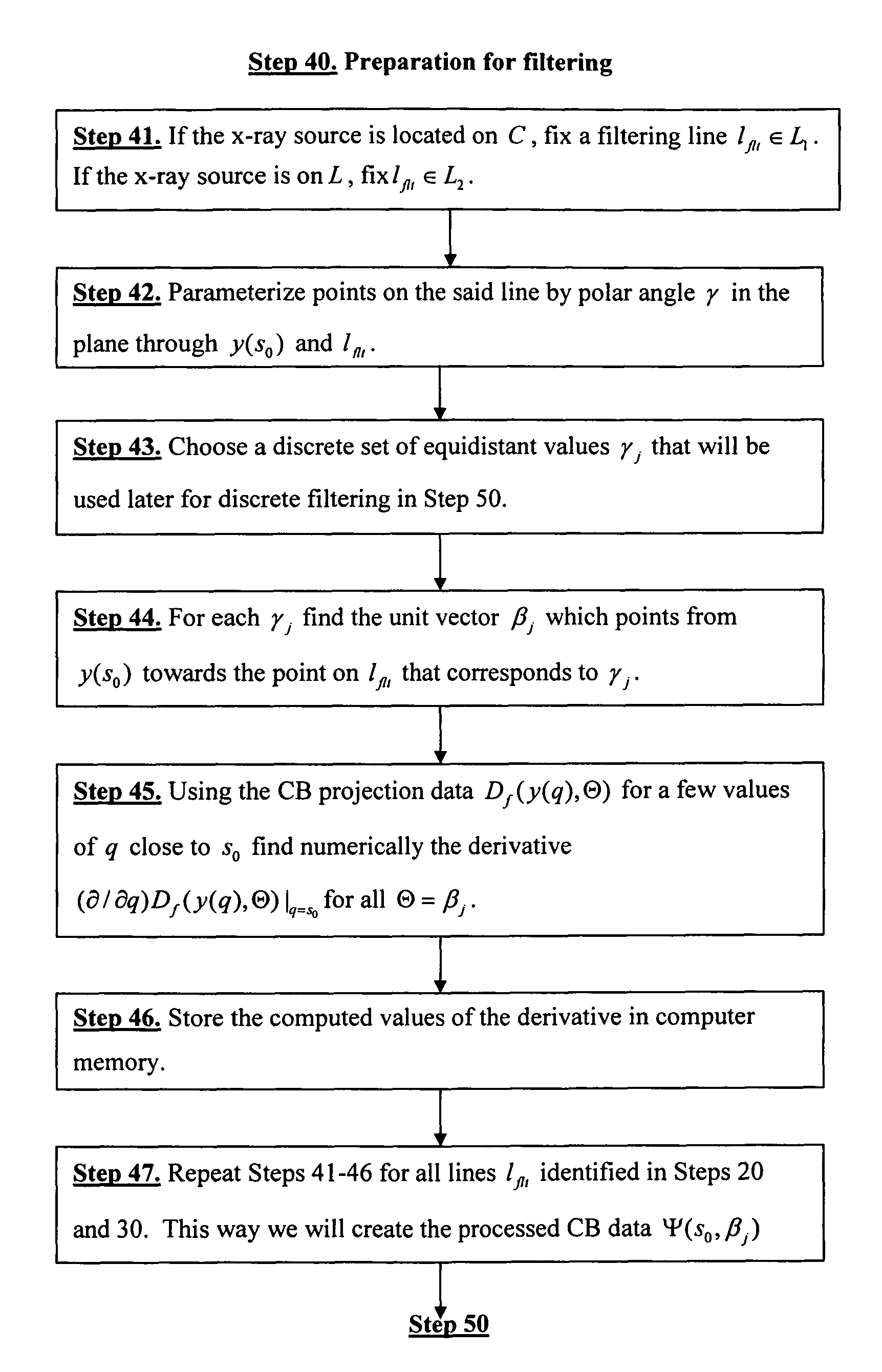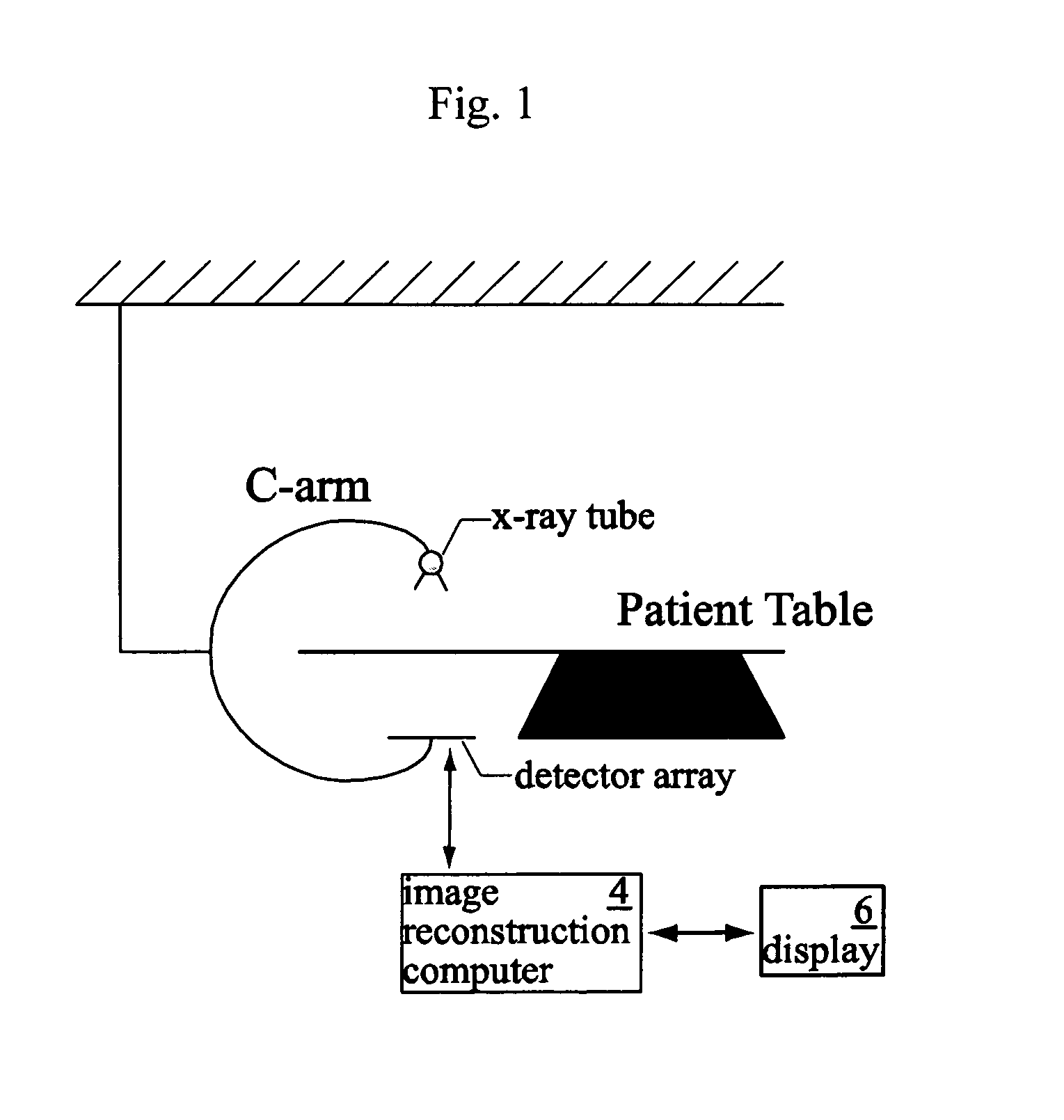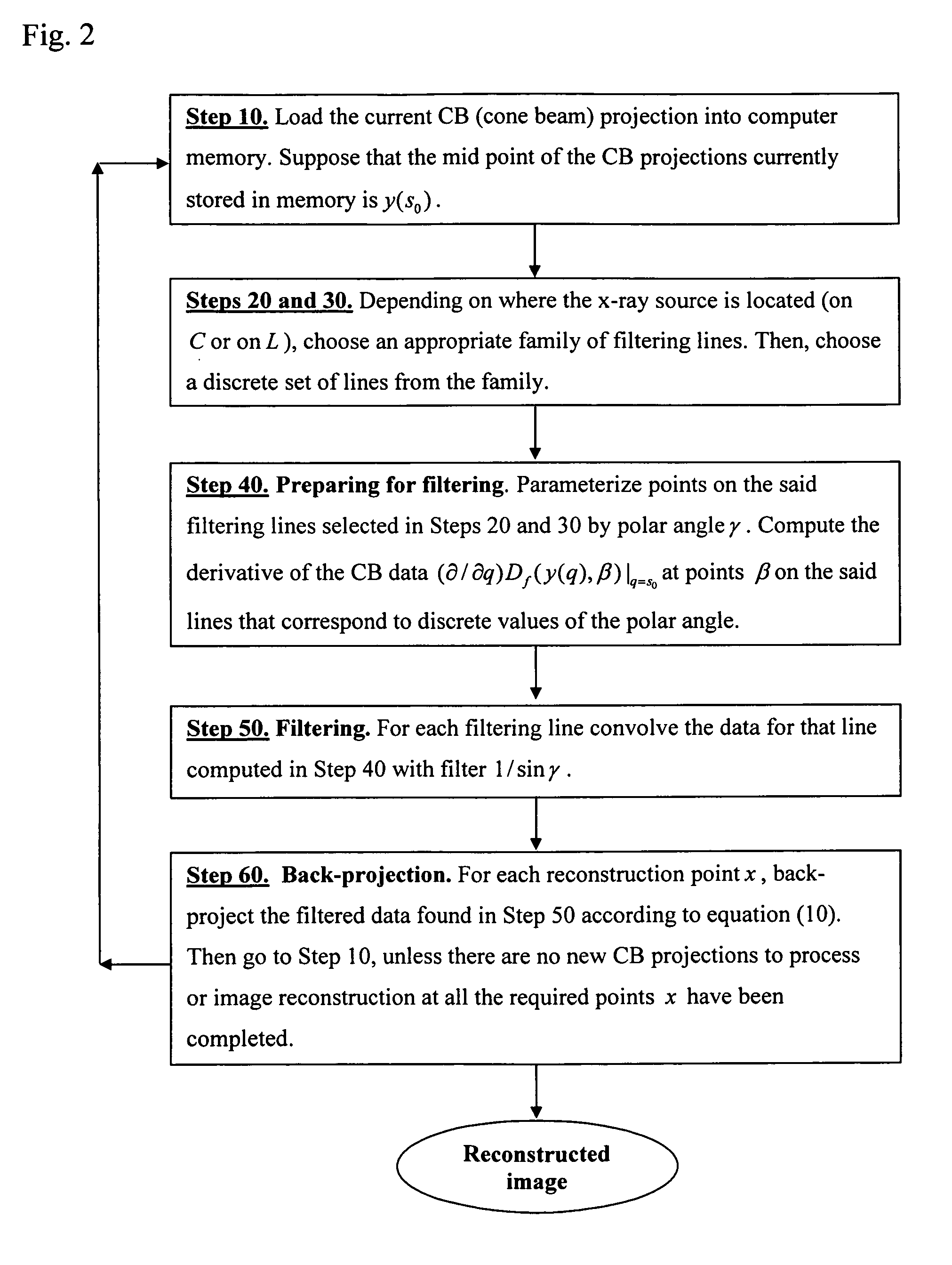Image reconstruction for a general circle-plus trajectory
a circle-plus trajectory and image reconstruction technology, applied in the field of image reconstruction, can solve the problems of significant image reconstruction problems, all techniques and devices experiencing problems with image reconstruction, and c-arm devices to reconstruct images
- Summary
- Abstract
- Description
- Claims
- Application Information
AI Technical Summary
Benefits of technology
Problems solved by technology
Method used
Image
Examples
case 1
[0065] both yƒ and y1 belong to the same cone, i.e. either yƒ, y1∈KC−(x) or yƒ, y1∈KC+(x). Select any plane Π∈ΞC(x). As previously discussed, Π does not intersect the cones. So yƒ and y1 are on the same side of Π, and Π∩L contains an even number of IPs. This contradicts the assumption that the number of IPs is odd, so case 1 does not happen.
case 2
[0066] either yƒ or y1 is outside both cones. Suppose, for example, that yƒ∉KC−(x)∪KC+(x). Let Λ be the union of the line through yƒ and y1 and all the lines tangent to L. Assume at the beginning that x∉Λ. It is clear from equation 1 that the cones KC±(x) are convex. Therefore we can find Π∈ΞC(x), which passes through yƒ, does not contain y1, intersects L transversely, and the tangent vector to L at yƒ is transversal to Π. Thus the number of Ips in Π′∩L is finite for all Π′∈ΞC(x) sufficiently close to Π. Suppose there are N Ips in Π∩L. Since yƒ is an end-point of L and y1∉Π, we can find an open set of planes in a neighborhood of Π, which have N Ips with L, and another open set of planes in a neighborhood of Π, which have N−1 Ips with L. Since either N or N−1 is even, this is again a contradiction.
[0067]The argument shows that equation 2 applies to almost all x∈U. By continuity, equation 2 applies to all x∈U.
[0068]In what follows, assume that an open set U⊂U0 is fixed. Define:
U+:={x∈...
PUM
 Login to View More
Login to View More Abstract
Description
Claims
Application Information
 Login to View More
Login to View More - R&D
- Intellectual Property
- Life Sciences
- Materials
- Tech Scout
- Unparalleled Data Quality
- Higher Quality Content
- 60% Fewer Hallucinations
Browse by: Latest US Patents, China's latest patents, Technical Efficacy Thesaurus, Application Domain, Technology Topic, Popular Technical Reports.
© 2025 PatSnap. All rights reserved.Legal|Privacy policy|Modern Slavery Act Transparency Statement|Sitemap|About US| Contact US: help@patsnap.com



